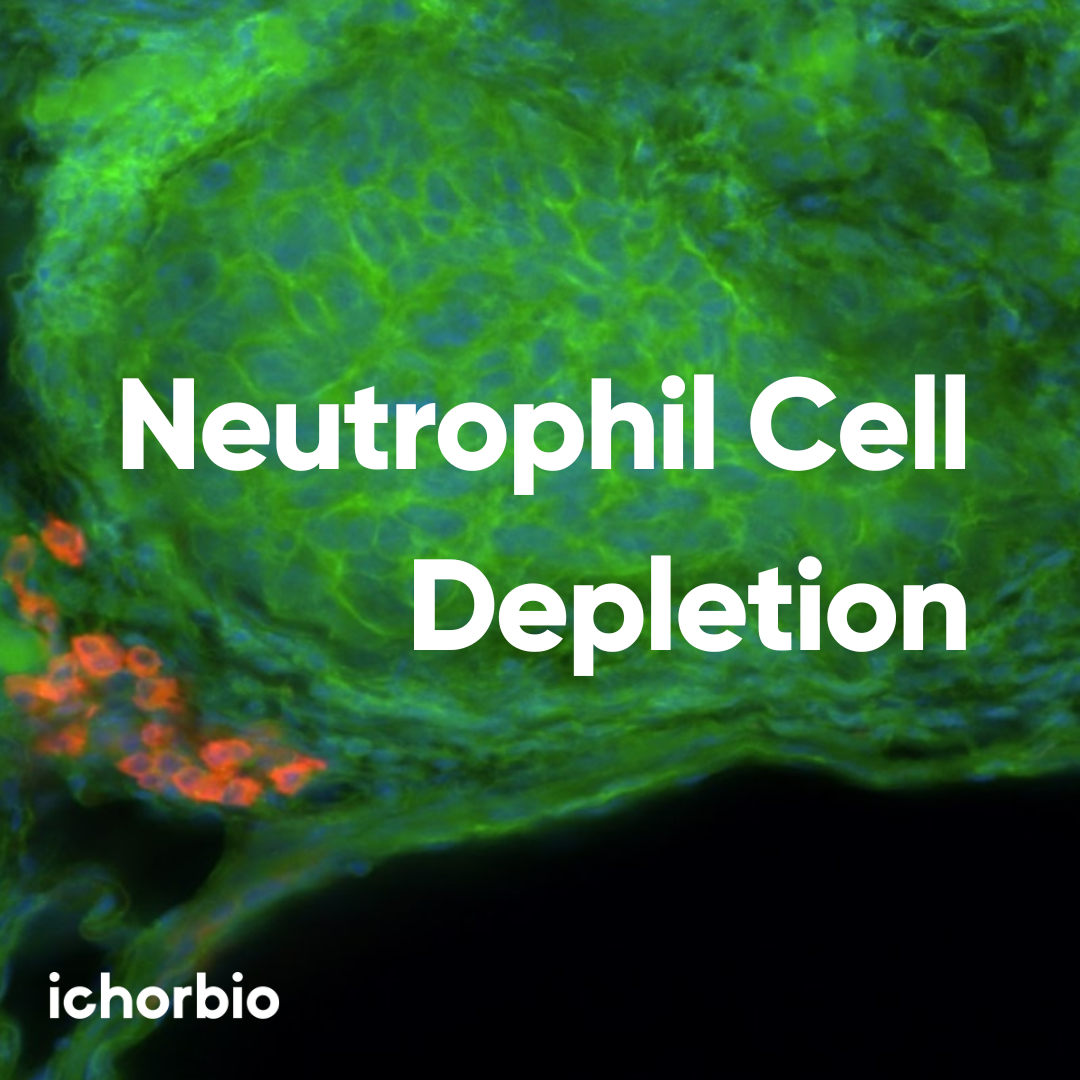How to deplete Neutrophils in vivo

How to deplete Neutrophils in vivo
1. Introduction
Researchers used a complex method like neutrophil depletion to regulate the immune responses in different trial cases [1]. The review will explore insight into neutrophil depletion, including its policies and importance and the functions of antibody clone RB6-8C5.
2. What is Neutrophil Depletion?
It is the decrease or eradication of neutrophil populations due to applying particular antibody therapies within an organism’s system [2]. Neutrophils are usually essential to fighting against pathogens and to repair damaged tissues in innate immunity. So, by understanding its mechanism, scientists can easily explain the role of neutrophil depletion in immune inflection, disease advancement, and medication challenges [3].
3. Why Might Researchers Want to Deplete Neutrophils In Vivo?
Understanding the precise function of neutrophils in various pathological conditions is fundamental for developing effective treatments. Neutrophil depletion allows researchers to dissect these cells' contributions to inflammation, autoimmunity, infection, and cancer. Additionally, it provides insights into the mechanisms underlying neutrophil-mediated tissue damage and resolution, paving the way for targeted therapeutic strategies [4, 5].
4. Antibody Clone RB6-8C5: Advantages and Pitfalls
RB6-8C5, a monoclonal antibody targeting the Ly6G antigen, is widely employed for neutrophil depletion in vivo. Its advantages include high specificity for neutrophils, efficient depletion kinetics, and compatibility with various experimental models, including mice. However, RB6-8C5 may exhibit off-target effects, leading to the depletion of other cell populations expressing Ly6G, such as dendritic cells. Additionally, its efficacy can be influenced by factors such as dosage, route of administration, and the experimental context [6, 7].
5. Range of Doses for RB6-8C5 Neutrophil Depletion
The standard dosage of RB6-8C5 antibody is being confirmed to achieve actual neutrophil depletion, reducing off-target effects. The dosage range may differ in the case of various conditions, for example, route of administration, trial model, and degree of neutrophil depletion.
In murine models, RB6-8C5 is typically administered intravenously or intraperitoneally. Intravenous administration often requires lower doses compared to intraperitoneal injection due to the direct systemic circulation and rapid distribution of the antibody. Intraperitoneal infusion, on the other hand, allows for sustained antibody exposure but may necessitate higher doses to achieve comparable levels of neutrophil depletion.
The dosage range for RB6-8C5 in murine models typically falls between 50 to 500 μg per mouse, with variations depending on the strain, age, and experimental conditions. Higher doses may be required for robust neutrophil depletion in larger animals or under conditions of heightened neutrophil recruitment, such as during acute inflammation or infection.
Researchers must conduct dose-response studies to identify the optimal dosage for their specific experimental objectives while considering potential side effects, antibody stability, and cost-effectiveness. Additionally, the timing of antibody administration relative to experimental interventions can influence its efficacy, highlighting the importance of experimental design and optimization.
Overall, understanding the dose-response relationship of RB6-8C5 is crucial for achieving reliable and reproducible neutrophil depletion in vivo, enabling precise investigations into the role of neutrophils in health and disease.
6. Other Antibody Clones of Interest
While RB6-8C5 is commonly used in murine models, alternative antibody clones may be preferable for other species or experimental designs. For instance, the antibody clone 1A8, targeting the Ly6G antigen in rats, offers a similar approach for neutrophil depletion in rat models. Moreover, the use of antibodies targeting alternative neutrophil surface markers, such as CD11b or CXCR2, provides flexibility in experimental design and may mitigate potential off-target effects associated with Ly6G-specific antibodies.
7. Conclusion
Combining antibody clone RB6-8C5 and neutrophil depletion has become an updated mechanism for exploring neutrophil functions in immune system-related human diseases. However, before administering the antibody, scientists should be concerned about its drawbacks, side effects, and safety. By leveraging recent advancements and understanding the nuances of neutrophil depletion, researchers can uncover novel therapeutic strategies and advance our understanding of immune regulation.
For more guides on how to deplete immune cells in vivo please visit: Targeting Proteins for Immune Cell Depletion in Vivo.
To find the products: https://ichor.bio/ly-6c-in-vivo-antibody-low-endotoxin-rb6-8c5-ich1131
8. References
1. Stackowicz J, Jönsson F, Reber LL. Mouse Models and Tools for the in vivo Study of Neutrophils. Front Immunol. 2020 Jan 21; 10:3130.
2. Linde IL, Prestwood TR, Qiu J, Pilarowski G, Linde MH, Zhang X, Shen L, Reticker-Flynn NE, Chiu DK, Sheu LY, Van Deursen S, Tolentino LL, Song WC, Engleman EG. Neutrophil-activating therapy for the treatment of cancer. Cancer Cell. 2023 Feb 13;41(2):356-372.e10.
3. Rosales C, Lowell CA, Schnoor M, Uribe-Querol E. Neutrophils: Their Role in Innate and Adaptive Immunity 2017. J Immunol Res. 2017; 2017:9748345.
4. Zhou W, Cao X, Xu Q, Qu J, Sun Y. The double-edged role of neutrophil heterogeneity in inflammatory diseases and cancers. MedComm (2020). 2023 Jul 23;4(4): e325.
5. Fu X, Liu H, Huang G, Dai SS. The emerging role of neutrophils in autoimmune-associated disorders: effector, predictor, and therapeutic targets. MedComm (2020). 2021 Jul 22;2(3):402-413.
6. Olofsen PA, Stip MC, Jansen JHM, Chan C, Nederend M, Tieland RG, Tsioumpekou M, Leusen JHW. Effective, Long-Term, Neutrophil Depletion Using a Murinized Anti-Ly-6G 1A8 Antibody. Cells. 2022 Oct 27;11(21):3406.
7. Daley JM, Thomay AA, Connolly MD, Reichner JS, Albina JE. Use of Ly6G-specific monoclonal antibody to deplete neutrophils in mice. J Leukoc Biol. 2008 Jan;83(1):64-70.
8. Nolan E, Malanchi I. Connecting the dots: Neutrophils at the interface of tissue regeneration and cancer. Semin Immunol. 2021 Oct; 57:101598.
9. Shen XF, Cao K, Jiang JP, Guan WX, Du JF. Neutrophil dysregulation during sepsis: an overview and update. J Cell Mol Med. 2017 Sep;21(9):1687-1697.
10. Zhong J, Li Q, Luo H, Holmdahl R. Neutrophil-derived reactive oxygen species promote tumor colonization. Commun Biol. 2021 Jul 13;4(1):865.

